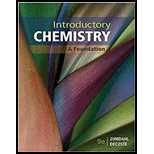
Introductory Chemistry: A Foundation
9th Edition
ISBN: 9781337399425
Author: Steven S. Zumdahl, Donald J. DeCoste
Publisher: Cengage Learning
expand_more
expand_more
format_list_bulleted
Concept explainers
Question
Chapter 15, Problem 96AP
Interpretation Introduction
Interpretation:
The number of moles of water present in
Concept Introduction:
Solution is composed of solute and solvent particles. Solute particles are always present in lower amount as compared to amount of the solvent in the solution.
The atomic mass of an element is defined as the sum of number of protons and number of neutrons. Molar mass of an element is determined from atomic mass of an element.
The number of moles is calculated by the formula,
Expert Solution & Answer
Want to see the full answer?
Check out a sample textbook solution
Chapter 15 Solutions
Introductory Chemistry: A Foundation
Ch. 15.3 - ercise 15.1 A 1 35-g sample of seawater is...Ch. 15.3 - Prob. 15.2SCCh. 15.4 - ercise 15.3 Calculate the molarity of a solution...Ch. 15.4 - ercise 15.4 Give the concentrations of the ions in...Ch. 15.4 - ercise 15.5 Calculate the number of moles of Cl...Ch. 15.4 - ercise 15.6 Formalin is an aqueous solution of...Ch. 15.5 - ercise 15.7 What volume of 12 M HCI must be taken...Ch. 15.6 - at if all ionic solids were soluble in water? How...Ch. 15.6 - Exercise 15.8 When aqueous solutions of Na2SO3 and...Ch. 15.7 - ercise 15.9 Calculate the volume of 0.10 M HNO3...
Ch. 15.8 - ercise 15.10 Calculate the normality of a solution...Ch. 15.8 - Prob. 15.11SCCh. 15 - ou have a solution of table sail in water. What...Ch. 15 - onsider a sugar solution (solution A) with...Ch. 15 - You need to make 150.0 mL of a 0.10 M NaCI...Ch. 15 - ou have two solutions containing solute A. To...Ch. 15 - m>5. Which of the following do you need to know to...Ch. 15 - onsider separate aqueous solutions of HCI and...Ch. 15 - Prob. 7ALQCh. 15 - an one solution have a greater concentration than...Ch. 15 - Prob. 9ALQCh. 15 - You have equal masses of different solutes...Ch. 15 - Which of the following solutions contains the...Ch. 15 - As with all quantitative problems in chemistry,...Ch. 15 - Prob. 13ALQCh. 15 - Prob. 14ALQCh. 15 - solution is a homogeneous mixture. Can you give an...Ch. 15 - ow do the properties of a nonhomogeneous...Ch. 15 - Prob. 3QAPCh. 15 - Prob. 4QAPCh. 15 - n Chapter 14. you learned that the bonding forces...Ch. 15 - n oil spill spreads out on the surface of water,...Ch. 15 - . The “Chemistry in Focus” segment Water, Water...Ch. 15 - Prob. 8QAPCh. 15 - Prob. 9QAPCh. 15 - Prob. 10QAPCh. 15 - A solution is a homogeneous mixture and, unlike a...Ch. 15 - Prob. 12QAPCh. 15 - How do we define the mass percent composition of a...Ch. 15 - Prob. 14QAPCh. 15 - Calculate the percent by mass of solute in each of...Ch. 15 - Calculate the percent by mass of solute in each of...Ch. 15 - Prob. 17QAPCh. 15 - Prob. 18QAPCh. 15 - A sample of an iron alloy contains 92.1 g Fe. 2.59...Ch. 15 - Consider the iron alloy described in Question 19....Ch. 15 - An aqueous solution is to be prepared that will be...Ch. 15 - Prob. 22QAPCh. 15 - A solution is to be prepared that will be 4.50% by...Ch. 15 - Prob. 24QAPCh. 15 - Prob. 25QAPCh. 15 - Hydrogen peroxide solutions sold in drugstores as...Ch. 15 - Prob. 27QAPCh. 15 - A solvent sold for use in the laboratory contains...Ch. 15 - Prob. 29QAPCh. 15 - A solution labeled “0.25 M AICl3” would contain...Ch. 15 - What is a standard solution? Describe the steps...Ch. 15 - Prob. 32QAPCh. 15 - 33. For each of the following solutions, the...Ch. 15 - 34. For each of the following solutions, the...Ch. 15 - 35. For each of the following solutions, the mass...Ch. 15 - Prob. 36QAPCh. 15 - 37. A laboratory assistant needs to prepare 225 mL...Ch. 15 - Prob. 38QAPCh. 15 - 39. Standard solutions of calcium ion used to test...Ch. 15 - Prob. 40QAPCh. 15 - 41. If 42.5 g of NaOH is dissolved in water and...Ch. 15 - 42. Standard silver nitrate solutions are used in...Ch. 15 - Prob. 43QAPCh. 15 - Prob. 44QAPCh. 15 - Prob. 45QAPCh. 15 - Prob. 46QAPCh. 15 - Prob. 47QAPCh. 15 - 48. What mass of solute is present in 225 mL of...Ch. 15 - Prob. 49QAPCh. 15 - Prob. 50QAPCh. 15 - Prob. 51QAPCh. 15 - 52. What volume of a 0.300 M CaCl2 solution is...Ch. 15 - Prob. 53QAPCh. 15 - Prob. 54QAPCh. 15 - Prob. 55QAPCh. 15 - Prob. 56QAPCh. 15 - Prob. 57QAPCh. 15 - Prob. 58QAPCh. 15 - Prob. 59QAPCh. 15 - 60. Suppose 325 in L of 0.150 M NaOH is needed for...Ch. 15 - 61. How much water must be added w 500. mL of...Ch. 15 - Prob. 62QAPCh. 15 - Prob. 63QAPCh. 15 - 64. Generally only the carbonates of the Group I...Ch. 15 - 65. Many metal ions are precipitated from solution...Ch. 15 - 66. Calcium oxalate, CaCO4, is very insoluble in...Ch. 15 - 67. When aqueous solutions of lead(II) ion are...Ch. 15 - 68. Aluminum ion may be precipitated from aqueous...Ch. 15 - 69. What volume of 0.502 M NaOH solution would be...Ch. 15 - 70. What volume of a 0.500 M NaOH solution would...Ch. 15 - 71. A sample of sodium hydrogen carbonate solid...Ch. 15 - 72. The total acidity in water samples can be...Ch. 15 - Prob. 73QAPCh. 15 - Prob. 74QAPCh. 15 - Prob. 75QAPCh. 15 - Prob. 76QAPCh. 15 - 77. Explain why the equivalent weight of H2SO4 is...Ch. 15 - Prob. 78QAPCh. 15 - Prob. 79QAPCh. 15 - Prob. 80QAPCh. 15 - Prob. 81QAPCh. 15 - Prob. 82QAPCh. 15 - Prob. 83QAPCh. 15 - Prob. 84QAPCh. 15 - 85. How many milliliters of 0.50 N NaOH are...Ch. 15 - 86. What volume of 0.104 N H2SO4is required to...Ch. 15 - 87. What volume of 0.151 N NaOH is required to...Ch. 15 - Prob. 88QAPCh. 15 - 89. A mixture is prepared by mixing 50.0 g of...Ch. 15 - Prob. 90APCh. 15 - 91. Suppose 50.0 mL of 0.250 M CoCl2 solution is...Ch. 15 - Prob. 92APCh. 15 - 93. Calculate the mass of AgCl formed, and the...Ch. 15 - 94. Baking soda (sodium hydrogen carbonate....Ch. 15 - 95. Many metal ions form insoluble sulfide...Ch. 15 - Prob. 96APCh. 15 - Prob. 97APCh. 15 - Prob. 98APCh. 15 - Prob. 99APCh. 15 - Prob. 100APCh. 15 - Prob. 101APCh. 15 - You mix 225.0 mL of a 2.5 M HCl solution with...Ch. 15 - A solution is 0.1% by mass calcium chloride....Ch. 15 - Prob. 104APCh. 15 - Prob. 105APCh. 15 - A certain grade of steel is made by dissolving 5.0...Ch. 15 - Prob. 107APCh. 15 - Prob. 108APCh. 15 - Prob. 109APCh. 15 - Prob. 110APCh. 15 - How many moles of each ion are present in 11.7 mL...Ch. 15 - Prob. 112APCh. 15 - Prob. 113APCh. 15 - Prob. 114APCh. 15 - Concentrated hydrochloric acid is made by pumping...Ch. 15 - Prob. 116APCh. 15 - Prob. 117APCh. 15 - Prob. 118APCh. 15 - If 10. g of AgNO3 is available, what volume of...Ch. 15 - Prob. 120APCh. 15 - Calcium carbonate, CaCO3, can be obtained in a...Ch. 15 - Prob. 122APCh. 15 - How many milliliters of 18.0 M H2SO4 are required...Ch. 15 - Consider the reaction between 1.0 L of 3.0 M...Ch. 15 - When 10. L of water is added to 3.0 L of 6.0 M...Ch. 15 - Prob. 126APCh. 15 - How many grams of Ba (NO3)2are required to...Ch. 15 - Prob. 128APCh. 15 - What volume of 0.250 M HCI is required to...Ch. 15 - Prob. 130APCh. 15 - Prob. 131APCh. 15 - Prob. 132APCh. 15 - How many milliliters of 0.105 M NaOH are required...Ch. 15 - Prob. 134APCh. 15 - Prob. 135APCh. 15 - Consider the reaction between 0.156 L of 0.105 M...Ch. 15 - Prob. 137CPCh. 15 - A solution is prepared by dissolving 0.6706 g of...Ch. 15 - What volume of 0.100 M NaOH is required to...Ch. 15 - Prob. 140CPCh. 15 - A 450.O-mL sample of a 0.257 M solution of silver...Ch. 15 - A 50.00-mL sample of aqueous Ca(OH)2 requires...Ch. 15 - When organic compounds containing sulfur are...Ch. 15 - Prob. 1CRCh. 15 - Prob. 2CRCh. 15 - Prob. 3CRCh. 15 - Prob. 4CRCh. 15 - Prob. 5CRCh. 15 - Prob. 6CRCh. 15 - Prob. 7CRCh. 15 - Prob. 8CRCh. 15 - Prob. 9CRCh. 15 - Prob. 10CRCh. 15 - Prob. 11CRCh. 15 - Without consulting your textbook, list and explain...Ch. 15 - What does “STP’ stand for? What conditions...Ch. 15 - Prob. 14CRCh. 15 - Prob. 15CRCh. 15 - Define the normal boiling point of water. Why does...Ch. 15 - Are changes in state physical or chemical changes?...Ch. 15 - Prob. 18CRCh. 15 - Prob. 19CRCh. 15 - Prob. 20CRCh. 15 - Define a crystalline solid. Describe in detail...Ch. 15 - Define the bonding that exists in metals and how...Ch. 15 - Prob. 23CRCh. 15 - Define a saturated solution. Does saturated mean...Ch. 15 - Prob. 25CRCh. 15 - When a solution is diluted by adding additional...Ch. 15 - Prob. 27CRCh. 15 - Prob. 28CRCh. 15 - Prob. 29CRCh. 15 - Prob. 30CRCh. 15 - Prob. 31CRCh. 15 - When calcium carbonate is heated strongly, it...Ch. 15 - If an electric current is passed through molten...Ch. 15 - Prob. 34CRCh. 15 - Prob. 35CRCh. 15 - Prob. 36CRCh. 15 - Prob. 37CRCh. 15 - Prob. 38CRCh. 15 - Prob. 39CRCh. 15 - Prob. 40CRCh. 15 - Prob. 41CRCh. 15 - 42. a. Fill in the following table as if it is a...
Knowledge Booster
Learn more about
Need a deep-dive on the concept behind this application? Look no further. Learn more about this topic, chemistry and related others by exploring similar questions and additional content below.Similar questions
- The units of parts per million (ppm) and parts per billion (ppb) are commonly used by environmental chemists. In general, 1 ppm means 1 part of solute for every 106 parts of solution. Mathematically, by mass: ppm=gsolutegsolution=mgsolutekgsolution In the case of very dilute aqueous solutions, a concentration of 1.0 ppm is equal to 1.0 g of solute per 1.0 mL, which equals 1.0 g solution. Parts per billion is defined in a similar fashion. Calculate the molarity of each of the following aqueous solutions. a. 5.0 ppb Hg in H2O b. 1.0 ppb CHCl3 in H2O c. 10.0 ppm As in H2O d. 0.10 ppm DDT (C14H9Cl5) in H2Oarrow_forwardHow do we define the mass percent composition of a solution? Give an example of a solution, and explain the relative amounts of solute and solvent present in the solution in terms of the mass percent composition.arrow_forward33. For each of the following solutions, the number of moles of solute is given, followed by the total volume of the solution prepared. Calculate the molarity of each solution. a. 0.521 mol NaCl; 125 mL b. 0.521 mol NaCl; 250. mL c. 0.521 mol NaCl; 500. mL d. 0.521 molNaCl; 1.00 Larrow_forward
- A solution is 0.1% by mass calcium chloride. Therefore, 100. g of the solution contains g of calcium chloride.arrow_forwardhy is water an important solvent? Although you have not yet studied water in detail, can you think of some properties of water that make it so important?arrow_forwardWhat mass of a 4.00% NaOH solution by mass contains 15.0 g of NaOH?arrow_forward
arrow_back_ios
arrow_forward_ios
Recommended textbooks for you
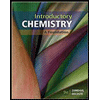 Introductory Chemistry: A FoundationChemistryISBN:9781337399425Author:Steven S. Zumdahl, Donald J. DeCostePublisher:Cengage Learning
Introductory Chemistry: A FoundationChemistryISBN:9781337399425Author:Steven S. Zumdahl, Donald J. DeCostePublisher:Cengage Learning Living By Chemistry: First Edition TextbookChemistryISBN:9781559539418Author:Angelica StacyPublisher:MAC HIGHER
Living By Chemistry: First Edition TextbookChemistryISBN:9781559539418Author:Angelica StacyPublisher:MAC HIGHER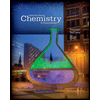 Introductory Chemistry: A FoundationChemistryISBN:9781285199030Author:Steven S. Zumdahl, Donald J. DeCostePublisher:Cengage Learning
Introductory Chemistry: A FoundationChemistryISBN:9781285199030Author:Steven S. Zumdahl, Donald J. DeCostePublisher:Cengage Learning ChemistryChemistryISBN:9781305957404Author:Steven S. Zumdahl, Susan A. Zumdahl, Donald J. DeCostePublisher:Cengage Learning
ChemistryChemistryISBN:9781305957404Author:Steven S. Zumdahl, Susan A. Zumdahl, Donald J. DeCostePublisher:Cengage Learning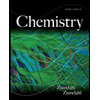
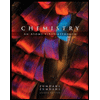 Chemistry: An Atoms First ApproachChemistryISBN:9781305079243Author:Steven S. Zumdahl, Susan A. ZumdahlPublisher:Cengage Learning
Chemistry: An Atoms First ApproachChemistryISBN:9781305079243Author:Steven S. Zumdahl, Susan A. ZumdahlPublisher:Cengage Learning

Introductory Chemistry: A Foundation
Chemistry
ISBN:9781337399425
Author:Steven S. Zumdahl, Donald J. DeCoste
Publisher:Cengage Learning

Living By Chemistry: First Edition Textbook
Chemistry
ISBN:9781559539418
Author:Angelica Stacy
Publisher:MAC HIGHER

Introductory Chemistry: A Foundation
Chemistry
ISBN:9781285199030
Author:Steven S. Zumdahl, Donald J. DeCoste
Publisher:Cengage Learning

Chemistry
Chemistry
ISBN:9781305957404
Author:Steven S. Zumdahl, Susan A. Zumdahl, Donald J. DeCoste
Publisher:Cengage Learning


Chemistry: An Atoms First Approach
Chemistry
ISBN:9781305079243
Author:Steven S. Zumdahl, Susan A. Zumdahl
Publisher:Cengage Learning
Solutions: Crash Course Chemistry #27; Author: Crash Course;https://www.youtube.com/watch?v=9h2f1Bjr0p4;License: Standard YouTube License, CC-BY